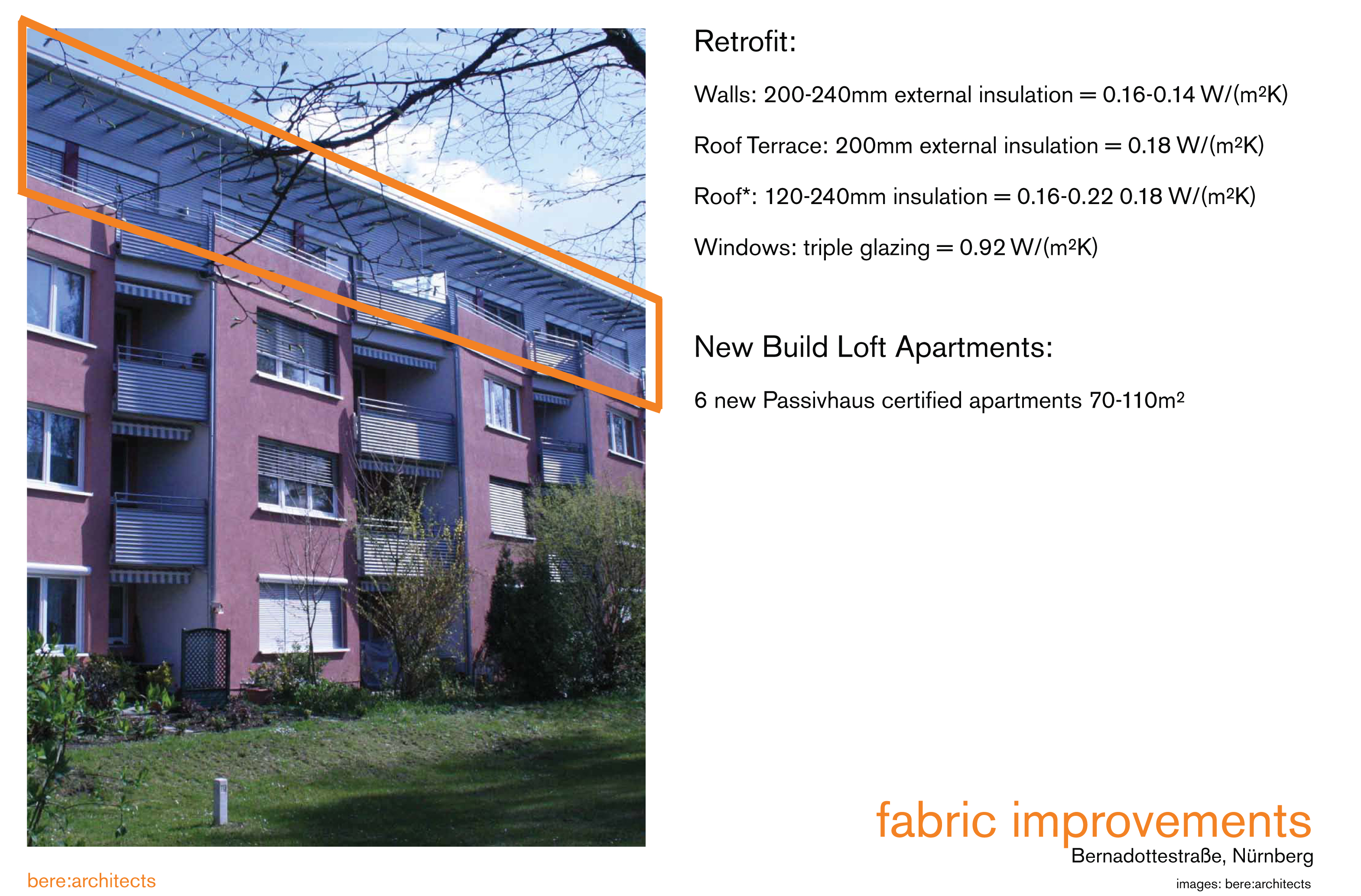As part of the Green Sky Thinking week 17th – 22nd September, the Institute for Sustainability brought together some of the UK’s leading retrofit experts to demonstrate how industry professionals and trades can understand and “seize the business opportunities emerging in the fast-expanding area of low carbon building and retrofit”. On Thursday morning The Mayville Community Centre and Southern Housing Group hosted a well-attended seminar, ‘Retrofit – the next steps – Retrofit at Scale’.
The idea for this seminar emerged from a discussion between Keith Howard of Southern Housing (client for one of our single family house, government funded ‘retrofit for the future’ projects) and Justin Bere, who shared an interest in exploring the cost savings that can (and must) be achieved by retrofitting blocks of terraced houses under large scale building contracts. Justin suggested that the seminar would refer to the lessons that can be learnt from Germany where the retrofit of blocks of flats is often partly funded by the additional accommodation built on top of the original block. It was decided that we would also investigate the cost of improving a terrace of houses and see what savings could be achieved over the cost of doing buildings ‘one at a time’.

In the end, after attending a number of other seminars and conferences in the same and preceding week, Justin decided to use the opportunity to discuss his fundamental concerns about the commercial drivers and blinkered political context to scaling up, both within the industry and within the statutory authorities, including some policy makers. Getting the professional and political context right is an essential prerequisite to any attempt at scaling up.

Dan then followed this talk by presenting a convincing selection of translated slides sent over to us from Dr Burkhard Schulze Darup of Schulze Darup and Partner, architects, Nurnberg. These slides told an impressive story of the comfort, health, employment and long term financial benefits of deep retrofits carried out on a massive scale.
It was clear from the costs shown in the German examples that meaningful work requires hard work and heavy financial investment in the future. This is not going to be achieved by spending a diminutive £6000 per house envisaged by some government ministers. Often in the UK it is said that there is no money for deep retrofit improvements and at the same time the UK is spending billions of pounds on the scramble to reap the benefits of a government feed-in-tariff, funded by a tax on energy bills. This same mechanism could and should be used to create British jobs doing the fundamental and less glamorous work of deep fabric improvements including insulation and decent windows that improve the comfort and reduce the fuel costs of UK citizens for generations to come, starting with the elderly and disabled. Instead government legislation has ended up funding the absurd dash to put mostly imported photovoltaic panels, with an expected life of just 25 years, on roofs of buildings that are leaky and uninsulated, before the funding gets reduced in March 2012. ‘Fabric First’ is now widely established common sense – but government sources of funding are driving through a reverse policy to this!
Other speakers included Keith Howard, Assets Manager from the Southern Housing Group housing association, Paul Ruyssevelt from the Technology Strategy Board and Steve Owen of Ursus Consulting. Speakers addressed the next steps needed to tackle the urgent need to scale-up low energy retrofitting in the UK. As new-build only represents one per cent of the building stock each year, for the building sector to reach the government’s target of an 80% reduction of C02 emissions by 2050 the UK needs to retrofit 500,000 homes a year (or one a minute).
Our practice has recently completed two Retrofit for the Future projects, Passfield Drive and Grove Road. Both projects demonstrate the application of the Passivhaus approach as a means of achieving big improvements in energy efficiency in ways that can be realistically reproduced across the country in large numbers. We are also currently conducting our own research into the economies that scaling-up such retrofits may produce. When we have completed our work, our findings will be posted on this blog site.